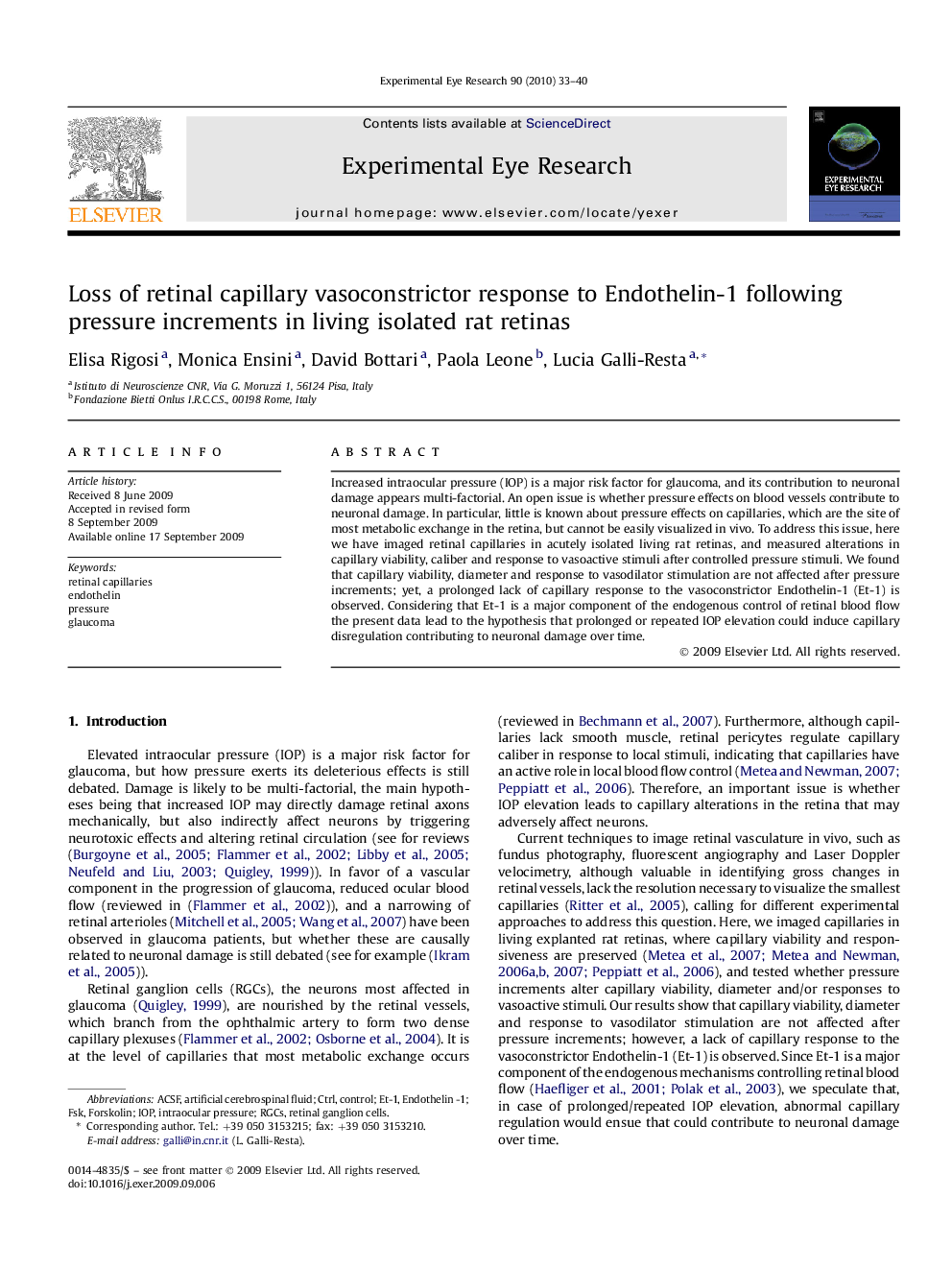| Article ID | Journal | Published Year | Pages | File Type |
|---|---|---|---|---|
| 4011897 | Experimental Eye Research | 2010 | 8 Pages |
Increased intraocular pressure (IOP) is a major risk factor for glaucoma, and its contribution to neuronal damage appears multi-factorial. An open issue is whether pressure effects on blood vessels contribute to neuronal damage. In particular, little is known about pressure effects on capillaries, which are the site of most metabolic exchange in the retina, but cannot be easily visualized in vivo. To address this issue, here we have imaged retinal capillaries in acutely isolated living rat retinas, and measured alterations in capillary viability, caliber and response to vasoactive stimuli after controlled pressure stimuli. We found that capillary viability, diameter and response to vasodilator stimulation are not affected after pressure increments; yet, a prolonged lack of capillary response to the vasoconstrictor Endothelin-1 (Et-1) is observed. Considering that Et-1 is a major component of the endogenous control of retinal blood flow the present data lead to the hypothesis that prolonged or repeated IOP elevation could induce capillary disregulation contributing to neuronal damage over time.
